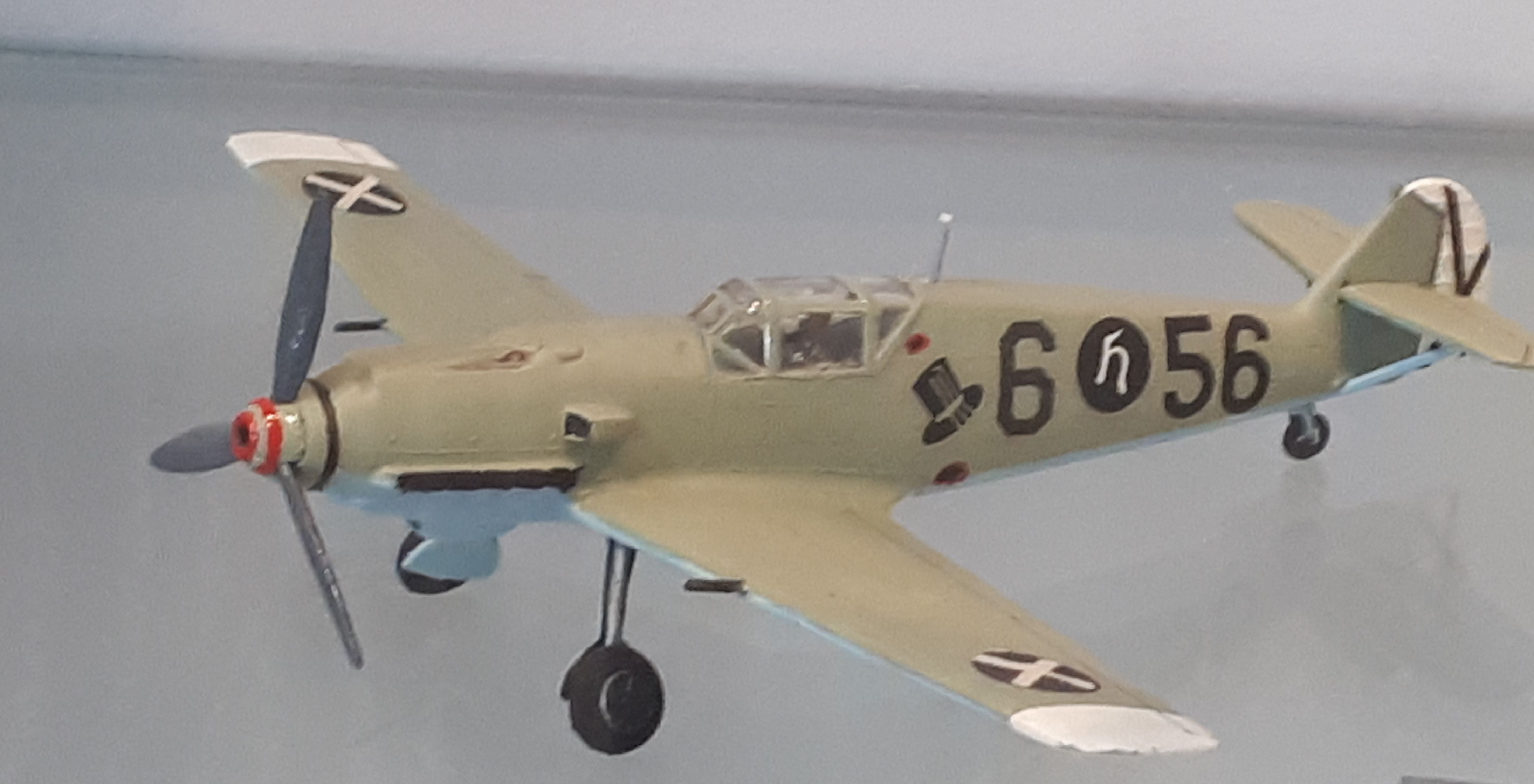Model of the month April 2018 Messerschmitt Bf 109
Messerschmitt Bf 109 E-1,Single Seater Fighter

The Emil, as the E-Series was called, was the real goal of the 109 development. Since the end of the twenties Messerschmitt was in the know about the development of a 1000 hp-engine by Daimler-Benz. This engine was supposed to be available in the second half of the thirties. (BTW: after the German reunification this engine bobed up, was excellently refurbished and now can be seen at the MTU-Museum in Munic).
Hence, the engine for the 109 had already been determined.
In the meantime other engines had to be mounted: Junkers 12-cylinder Jumo 210 carburettor engines, later replaced by injection engines with 700 hp. Those planes were the B,C and D types which were tested by the Legion Condor in the Spanish Civil War. They were just on a par with the Soviet Polikarpov I-16 Mosca/Rata.
This instantly changed with the additional 300 hp of the E-type. Several 109 prototypes had been used in the meantime; the best known is the 109 V13, still equipped with the carburettor engine DB 600 with just under 1000 hp - the racing model had about 1670 hp. With this „sprint“ model the test pilot Dr. Wurster established a new speed record for landplanes in November of 1937 with 610,95 km/h. The old record had been set by Howard Hughes with his H-1; in September 1935 he achieved a speed of 567,115 km/h.
The first standard version of the Emil was the E-1 with an injector DB 601 with 990 hp (which then delivered 1350 hp in the E-7 and 109 F as 601 N!). It was built in series from January 1939. The air force's equipment began in April 1939, including the Condor Legion in Spain, which soon handed these aircraft over to the (new) Spanish Air Force. One of these has been rescued by chance and is being completely restored by its British owner at Meier Motors in Bremgarten). In autumn 1939 - after the Polish campaign - the conversion was almost complete, the former 109 were given to flight training and to night hunting.
The most important externally distinguishable changes were:
- 1. the new engine stem with now only the oil cooler below the engine. The air inlet to the loader was on the left side.
- 2. the inlets for engine cooling were installed in the rear third of both wings close to the fuselage and led to the "Junkers nozzle cooler". Behind it were up and down extendable flaps to regulate the cooling air flow. The whole thing brought an additional boost (the Spitfire and the NA-P-51 D Mustang used this so-called Meredith effect even more intensively).
- 3. A new 3-blade VDM controllable pitch propeller converted the higher engine power into thrust more effectively.
All these measures resulted in a veritable performance gain. While the Dora with 700 HP Jumo 210 brought about 450 km/h, the Emil flew 100 km/h faster.
In addition, new equipment such as radios and reflex sights were installed. The armament was still the same as the Dora: 2 x MG 17 (7.92 mm) above the engine and 2 x MG 17 in the wings (these were replaced first in the E-3 by 20 mm MG FF). This was the Luftwaffe fighter equipment from the beginning of the war up to the air battle over England.
Compared to the Hawker Hurricane were only minor differences in performance, the outcome of a fight depended on the pilots. The Spitfire was different: the Supermarine Spitfire II was technically similar to the Emil, it was superior to the 109 to 5000 m altitude, especially during relatively slow manoeuvres, while at higher altitudes the109 had advantages. The performance race of the air forces took off.
Technical data:
Length 8.64 m, wingspan 9.87 m, wing area 16.2 m², height 2.60 m, empty weight 2010 kg, take-off weight 2505 kg, v/max in 5 km 560 km/h, service peak height 10500 m, range (without aerial combat) 800 km, Crew 1 pilot, engine: 1 x Daimler-Benz DB 601A with 990 PS/729 kW, suspended 12 cylinder liquid cooler V-engine with Bosch direct injection and 4 valves/cylinder.
